In 1957, the Dade County Education Commission acknowledged “security” as an integral component of District operations and approved the position of Security Assistant (SA), reporting directly to the Superintendent of Public Instruction.
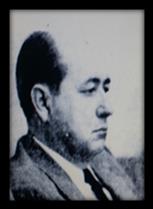
Mr. John Tyler was subsequently appointed by the Commission to be the SA. The newly appointed SA was mainly responsible for conducting internal audit investigations; investigating allegations of employee misconduct; and to act as the liaison between the Commission for Public Education, law enforcement agencies and the State Attorney’s Office (SAO). The SA also conducted pre-employment background investigations of District applicants for the Personnel Department, and submitted crime reports to the SAO. In addition, the SA provided law enforcement with technical knowledge of the Plant Security Substation of Operation and Maintenance and other departments within the School District.
In 1966, the job responsibility of the SA was changed to keep pace with the demanding and dynamic social changes of the mid 1960’s. The position of SA was upgraded to that of Director of Security. Shortly thereafter, the School Board authorized the Security Services Department (SSD) to be created under the new Director of Security. The newly formed SSD was responsible for the protection of life and property on school board owned or leased property, beginning the transition from a security role to that of policing.
In 1973 due to the high incidence of burglaries and other crimes occurring after regular school hours, the first night patrol was established to augment police services to the District. During this time, 19 officers – approximately 35% of the police personnel – were actively involved with “follow-up investigations” of employee misconduct. Two school security officers were also assigned to each of the eight secondary schools for the purpose of reducing or eliminating assaults. The school security officer assignments were a precursor to our modern-day School Resource Officer (SRO) program. The reassignment of police personnel from the night patrol to selected schools during regular school hours was a significant move at the time. The restructuring represented a shift in District philosophy from property preservation to the protection and security of students and staff. Tyler continued to serve in this role until 1974, and was instrumental in defining the humble beginnings of the fledgling organization.
 The District hired Mr. John O. Truitt in 1974, as the Director of the SSD. Director Truitt was charged with re-organizing SSD by decentralizing police services from a single office, to one district office and regional SIU offices. These offices were embedded within the region offices and were commanded by a senior supervisor. This position later became known as Police Captain.
The District hired Mr. John O. Truitt in 1974, as the Director of the SSD. Director Truitt was charged with re-organizing SSD by decentralizing police services from a single office, to one district office and regional SIU offices. These offices were embedded within the region offices and were commanded by a senior supervisor. This position later became known as Police Captain.
During his tenure, Director Truitt observed a deficiency in the number of women and minority police officers, so he began an aggressive campaign to hire women and minorities sponsoring them in the police academy. Director Truitt was also ahead of his time in utilizing statistical methodology and analysis in tracking incidents of crime and problems that lead to crime – strategies critical in the development of preventive measures. Many modern police departments have since adopted a similar process known as COMPSTAT. Truitt served as Director until 1978 at which time he was succeeded by Mr. Eugene O. “Red” McAllister.
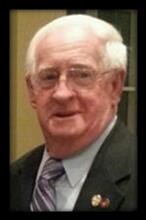 McAllister began his career as an investigator for the District’s Security Services Department, following up on property crimes, such as burglaries, vandalisms, arsons and thefts. Earlier in his career, as Assistant Director in 1971, McAllister spearheaded legislation that authorized school districts throughout Florida to employ commissioned police officers.
McAllister began his career as an investigator for the District’s Security Services Department, following up on property crimes, such as burglaries, vandalisms, arsons and thefts. Earlier in his career, as Assistant Director in 1971, McAllister spearheaded legislation that authorized school districts throughout Florida to employ commissioned police officers.
In 1979, the SSD was reorganized as the Special Investigative Unit (SIU) of Dade County Public Schools. Five years later, SIU began to hire sworn personnel to increase staffing in response to the needs of the District. During the mid-1980’s, McAllister began a pilot program assigning school police officers to secondary school sites. It proved to be the beginning the School Resource Officer (SRO) program which is the backbone of the agency today. The gang reduction and intelligence sharing initiatives implemented by Chief McAllister were instrumental in combating street gangs and laid the foundation for what was to become the Multi-Agency Gang Task Force.
In 1992, the Superintendent of Schools made a commitment to the School Board to assign a police officer to every secondary school as a proactive measure to provide a safe learning environment. At that time, SIU had an organizational restructuring to prepare for its new role and expanding responsibilities, and was subsequently renamed the Division of School Police (DSP). Chief McAllister served as the Chief of the DSP until 1996.
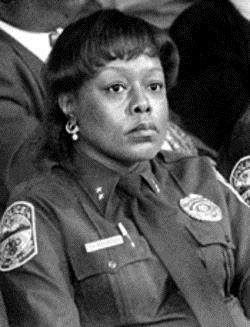 Upon Chief McAllister’s retirement, Vivian H. Monroe was appointed Chief of the DSP. Chief Monroe was the first African – American female police executive to be appointed Executive Director of the DSP. Her appointment came after many years of service to the District. During Chief Monroe’s tenure, the DSP began to expand its role to a more traditional policing agency by addressing the need for traffic enforcement to protect children who walk or ride their bicycles to school.
Upon Chief McAllister’s retirement, Vivian H. Monroe was appointed Chief of the DSP. Chief Monroe was the first African – American female police executive to be appointed Executive Director of the DSP. Her appointment came after many years of service to the District. During Chief Monroe’s tenure, the DSP began to expand its role to a more traditional policing agency by addressing the need for traffic enforcement to protect children who walk or ride their bicycles to school.
In 1999, the DSP began a transformation to a more congruent organization in relation to the District, striving to enhance the delivery of police services. This conversion was highlighted with the change of the uniform from brown to blue. In addition to the uniform change, the service badge was re-designed to represent the agency’s rich heritage and commitment to school policing. Depicted in the background of the new police badge is Miami Senior High School – constructed in 1902 as the first school in the county. Under Chief Monroe, the Department applied for the COPS in Schools Grant through the Department of Justice, to hire and increase the number of sworn personnel. Chief Monroe served as the agency head until the year 2000, when Donald J. “Pete” Cuccaro was appointed Chief of Police.
 During his time with the Department, Chief Cuccaro inspired a “New Standard of Excellence,” and was responsible for a significant amount of agency growth. In the year 2000, the DSP was re-named the Miami-Dade Schools Police Department (MDSPD). Later that year, the MDSPD became one of a select few law enforcement agencies to be awarded millions of dollars through the previously applied for Cops in Schools grant. This resulted in a significant expansion of the workforce. Under Chief Cuccaro’s leadership, the Department was also awarded state grant funds for the upgrade and improvement of technology and ancillary facilities. The awarding of these grants was instrumental in the growth and the quality of service provided to the District, as state funds were increasingly earmarked for education, resulting in reduced dollars for secondary programs.
During his time with the Department, Chief Cuccaro inspired a “New Standard of Excellence,” and was responsible for a significant amount of agency growth. In the year 2000, the DSP was re-named the Miami-Dade Schools Police Department (MDSPD). Later that year, the MDSPD became one of a select few law enforcement agencies to be awarded millions of dollars through the previously applied for Cops in Schools grant. This resulted in a significant expansion of the workforce. Under Chief Cuccaro’s leadership, the Department was also awarded state grant funds for the upgrade and improvement of technology and ancillary facilities. The awarding of these grants was instrumental in the growth and the quality of service provided to the District, as state funds were increasingly earmarked for education, resulting in reduced dollars for secondary programs.
Chief Cuccaro’s vision and expertise ushered in a new era in school policing and the investigations unit was formalized into the Investigative Division. The K-9 Unit expanded from one to five canine handlers, ensuring timely response countywide. He also developed the Police Information Officer position that is still in place today. Chief Cuccaro re-designed the color scheme on the marked police vehicles, and administered a substantial District purchase of new vehicles that saved tens of thousands of dollars in maintenance and repairs. He served as Chief of Police and District Security until 2004.
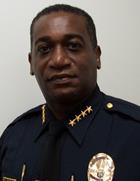 In July of 2004, Gerald L. Darling was appointed Chief of the MDSPD. Under his leadership, the Department emphasized prevention and intervention strategies and working collectively with the community to address crime and safety concerns. Drawing on his years of experience with the City of Miami Police Department, Chief Darling introduced COMPSTAT meetings for the Command Staff. Under his leadership, the Department also began seeking accreditation through the Commission for Florida Law Enforcement Accreditation. Chief Darling served until 2008.
In July of 2004, Gerald L. Darling was appointed Chief of the MDSPD. Under his leadership, the Department emphasized prevention and intervention strategies and working collectively with the community to address crime and safety concerns. Drawing on his years of experience with the City of Miami Police Department, Chief Darling introduced COMPSTAT meetings for the Command Staff. Under his leadership, the Department also began seeking accreditation through the Commission for Florida Law Enforcement Accreditation. Chief Darling served until 2008.
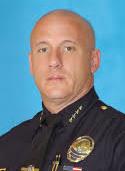 In August of 2008, Charles J. Hurley was named Chief of the MDSPD. During his tenure, Chief Hurley managed to reform the business practices of the Department and centralized the agency’s procurement process at a time of great economic uncertainty. As an advocate for youth, he implemented the Civil Citation Program (CCP) offering arrest alternatives for first time offenders. He also refined the 12 and Under Review process with the State Attorney’s Office – the CCP and the 12 and Under Review Process are key components of the juvenile crime intervention model, leading to the prevention model in use today. Chief Hurley prioritized Mental Health and Bullying training for all Department personnel. He placed a renewed emphasis on prevention and intervention strategies and as a result, there was a dramatic reduction in both incidents and arrests throughout his tenure.
In August of 2008, Charles J. Hurley was named Chief of the MDSPD. During his tenure, Chief Hurley managed to reform the business practices of the Department and centralized the agency’s procurement process at a time of great economic uncertainty. As an advocate for youth, he implemented the Civil Citation Program (CCP) offering arrest alternatives for first time offenders. He also refined the 12 and Under Review process with the State Attorney’s Office – the CCP and the 12 and Under Review Process are key components of the juvenile crime intervention model, leading to the prevention model in use today. Chief Hurley prioritized Mental Health and Bullying training for all Department personnel. He placed a renewed emphasis on prevention and intervention strategies and as a result, there was a dramatic reduction in both incidents and arrests throughout his tenure.
Chief Hurley oversaw a $600,000 upgrade of existing technologies, and also implemented Taser Electronic Control Devices for patrol units as a less than lethal tool for officers. Under his guidance, Chief Hurley led the establishment of a district-wide Metal Detection Program, and directed a redesign of the Department vehicles to the more traditional black and white configuration. He acted as Chief of Police until 2012.
Major Gerald D. Kitchell was appointed Acting Chief of Police and District Security after Hurley’s departure. For a one year period, Major Kitchell was able to smooth the transition, building on the recent successes, and creating a solid foundation to keep the agency moving forward.
In 2013, Ian A. Moffett was named Chief of Police and District Security. He returned to the District after leaving in 2009 to serve as a Major with the City of Miami Police Department, managing their Training Center.
Chief Moffett continued to implement innovative youth mentoring programs. Under Chief Moffett, MDSPD was accredited on October 5th of 2015. The police department also remained compliant with its mutual aid commitments and actively participated in police operations with Federal, State and local law enforcement agencies as part of an on-going effort to suppress the criminal street gang activity plaguing our youth.

